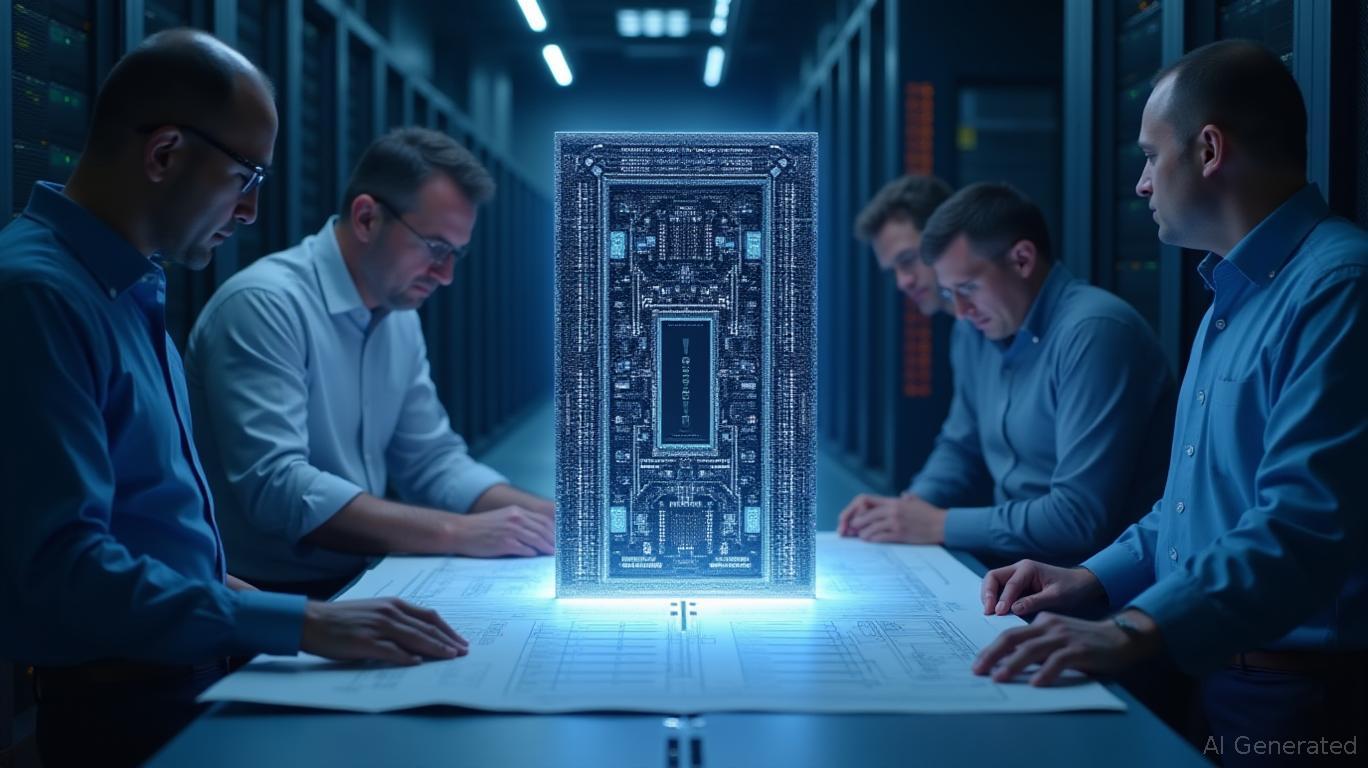Broadcom's Tomahawk 6: A Catalyst for AI Infrastructure Dominance
The AI revolution is fueling a race to build faster, more efficient data centers capable of handling the colossal computational demands of large language models and other advanced AI systems. At the heart of this transformation lies Broadcom's (AVGO) Tomahawk 6 switch ASIC, a technological leap that positions the company as a critical player in the AI hardware ecosystem. With its 102.4 terabits per second (Tbps) switching capacity—double that of its predecessor—the Tomahawk 6 is not just an incremental upgrade but a strategic move to dominate the $100+ billion AI hardware market.
The Technical Edge: Why Tomahawk 6 Matters
Broadcom's Tomahawk 6 is engineered to address the bandwidth and latency challenges of modern AI clusters. Key features include:
- Scale-Up and Scale-Out Unification: It supports up to 512 GPUs in a single system for tightly coupled training workloads and enables networks with over 100,000 GPUs using a two-layer topology. This eliminates the need for complex three-tier architectures, reducing latency and simplifying congestion control.
- Cognitive Routing 2.0: Advanced traffic management reduces bottlenecks by 50% under peak loads and achieves 10,000x faster failure recovery, ensuring seamless operation for hyperscalers.
- Co-Packaged Optics (CPO) Integration: By embedding optics directly into the chip,

These innovations make the Tomahawk 6 a direct competitor to NVIDIA's proprietary solutions like NVLink and Quantum-X InfiniBand. Unlike NVIDIA's closed ecosystem, Broadcom's open Ethernet standards—aligned with the Ultra Ethernet Consortium and Open Compute Project (OCP)—offer interoperability and cost efficiency, attracting hyperscalers like Google, Microsoft, and Meta.
Strategic Positioning: Outmaneuvering Competitors
Broadcom's advantage lies in its full-stack AI infrastructure strategy, combining hardware (ASICs, CPO) with software (VMware's AI Foundation). This vertical integration reduces dependency on third-party suppliers and lowers total cost of ownership for customers.
- Market Share Gains: Ethernet has surpassed InfiniBand in AI networking adoption, driven by Broadcom's open standards. Dell'Oro Group estimates Ethernet's share at 65% of the hyperscaler market, up from 50% in 2023.
- Hyperscaler Partnerships: Broadcom supplies seven of the world's largest cloud providers, including Microsoft (which plans a 50% increase in AI CapEx to $80 billion by 2026) and Meta (which is building AI “superclusters” with 1 million accelerator chips).
Analysts at JPMorgan and Citi highlight this ecosystem leadership, noting that Broadcom's Tomahawk 6 is now a “must-have” component for exascale data centers.
Financials and Analyst Consensus: A Growth Machine
Broadcom's financial performance underscores its AI-driven momentum:
- Revenue Growth: AI semiconductor revenue hit $4.4 billion in Q2 2025 (up 46% YoY), with projections to reach $5.1 billion in Q3.
- Margin Resilience: Gross margins remain robust at 64%, supported by high-value silicon and scale efficiencies.
Analysts are bullish:
- Rosenblatt: Raised the price target to $340, citing “best-in-class AI revenue visibility” and a 60% YoY growth trajectory through 2026.
- Deutsche Bank: Increased its target to $270, emphasizing margin stability and the Tomahawk 6's scalability.
- Cantor Fitzgerald: Projects AI revenue to hit $30 billion by 2026, far exceeding consensus estimates.
The average price target of $255.79 implies a 14% upside from current levels, while JPMorgan's $325 target reflects optimism about synergies from its VMware acquisition.
Risks and Considerations
- Geopolitical Headwinds: Broadcom's 20% reliance on Apple and exposure to Chinese markets (e.g., partnerships with Ufispace) pose regulatory and supply chain risks.
- Margin Pressures: A higher mix of lower-margin custom accelerators (XPUs) may temporarily squeeze gross margins, though management expects 66% adjusted EBITDA margins in 2025.
Investment Thesis: Buy Now, Target $300+
Broadcom is uniquely positioned to capitalize on the AI infrastructure boom. Its open standards, hyperscaler partnerships, and full-stack offering create a durable competitive advantage. With a 30x forward P/E ratio justified by 35% annual AI revenue growth, the stock offers compelling upside.
Recommendation:
- Buy: Accumulate shares at current levels, targeting $300–$340 by end-2025.
- Stop-Loss: $220 to mitigate macroeconomic risks.
- Hold for: 12–18 months to capture Tomahawk 6's scalability and VMware's AI-software synergies.
Conclusion
Broadcom's Tomahawk 6 is more than a chip—it's a linchpin for the next era of AI infrastructure. With hyperscalers racing to build exascale data centers, Broadcom's combination of performance, interoperability, and ecosystem reach makes it a must-own stock for investors betting on the AI revolution.
Sign up for free to continue reading
By continuing, I agree to the
Market Data Terms of Service and Privacy Statement

Comments
No comments yet